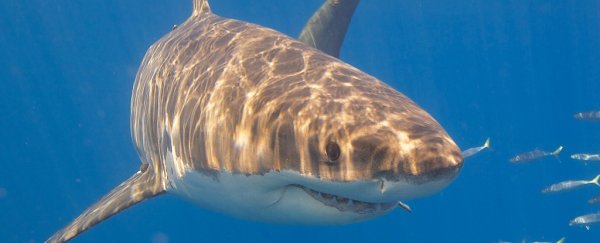Researchers are testing a new technology that aims to detect sharks and alert lifeguards as they approach beaches - hopefully limit shark attacks.
This year so far, there have been 17 shark attacks in Australia, and current methods of deterrence, such as shark nets and culls, can not only be damaging to the ecosystem - they might not even be that effective.
But new technology that's currently being tested by Australian researchers at the University of Technology Sydney (UTS) and NSW Department of Primary Industries (DPI) could limit damage to the ecosystem, while also keeping humans and sharks safely separated.
The system is called 'Clever Buoy' - which is definitely our new favourite ocean pun.
"In conjunction with increased aerial surveillance, drone surveillance, shark tagging and detection, and the SharkSmart app, the Clever Buoy technology can help us manage and mitigate the risk of shark bites on the NSW coast," said Niall Blair, New South Wales Minister for Primary Industries.
So how does the buoy, developed by Perth-based company Shark Mitigation Systems, actually work?
Using sonar technology, the buoy looks for shark-sized objects, moving in the way a typical shark does.
If it detects a shark-like object, it sends an alert to lifeguards and other interested parties so the water can be evacuated.
But people won't have to run out of the water, Jaws-style, every time the Clever Buoy locates a dolphin.
"In testing it has been identified that sharks create a distinctive sonar signature and swimming pattern that is different to mammals," Shark Mitigation Systems write on its website.
"The Clever Buoy sonar will adapt and develop with increasing knowledge of the difference between a shark's sonar signature and movement pattern and that of other sea life. The development is similar to the development of 'face recognition' software in humans."
Researchers at UTS Science are collaborating with the Clever Buoy team to make sure the technology is up to scratch, using one of the Clever Buoys located off the coast of Hawks Nest, in northern New South Wales.
The researchers deployed stereo underwater video cameras near the buoy, and recorded footage to confirm the shark detections made by the system.
"This collaborative research will rigorously and independently test the capabilities of the Clever Buoy system to detect sharks under real-world conditions off an ocean beach," said one of the UTS Science team, Bill Gladstone.
"We know from our previous research using aerial surveys that the Hawks Nest area is a nursery for juvenile white sharks. This presents us with a perfect opportunity to test the performance of the Clever Buoy in detecting white sharks, as well as the other species of sharks that occur there."
Gladstone and his team also used the Clever Buoy in Sea Life Sydney Aquarium, where its capabilities were tested with a greater number of shark species.
Considering out-dated culls and shark nets are still being used across Australia, hopefully this system will give us a better option for preventing shark attacks in the future.
UTS Science is a sponsor of ScienceAlert. Find out more about their research.
